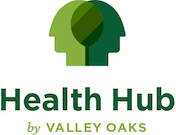The “Terrible Twos.” This stage of behavioral development is called that for a reason, and it can be one of the first real parenting challenges. Toddlers dramatically fall to the ground and sob when naptime is announced. Sharing toys? Not going to happen.
Children learn to regulate their emotions—sadness, anger, disappointment, and even happiness—by experiencing them and learning to manage them appropriately. But those never-ending, ear-piercing screams are enough to make a parent wonder: Is this just a meltdown, or could it be something more?
Tantrums or something more?
Disruptive mood dysregulation disorder (DMDD) describes children who have explosive and excessive tantrums that are not developmentally appropriate. After early childhood, researchers have shown that boisterous behavior is unlikely to continue. As children add more words to their vocabulary and learn to better communicate their thoughts and feelings, tantrums should decrease.
Parents can combat and prevent meltdowns by listening and validating how their child feels, redirecting behavior, rewarding positive actions rather than focusing on negative ones, and reminding children they are happy to talk with them once they use a quiet or “inside” voice. But how do parents handle over-the-top emotions that only worsen in older children and teens?
Mental illness warning signs
Identifying mental health issues early means receiving treatment sooner. One study showed that one in seven children and teenagers experience a treatable mental health disorder such as ADHD, depression, or anxiety. This research also showed that half of these young people never received services from a mental health professional. Gaps in diagnosing and treating mental health issues in young people can impact who they become as adults. In short, early intervention makes therapies more effective in the long-term.
Here are signs of mental illness to be aware of:
- Feeling sad or withdrawn for more than two weeks
- Making plans or attempting to harm or kill others
- Suddenly experiencing a racing heartbeat, fast breathing, or overwhelming fear for no known reason
- Wanting to hurt others or themselves
- Out-of-control behavior that hurts others or themselves
- Lack of appetite, refusal to eat, or use of diet aids to lose weight
- Worries that interfere with once-beloved or routine daily activities
- Lack of concentration and focus that causes school grades to slip
- Drug or alcohol use
- Severe mood swings or a drastic change in personality
Please keep in mind that these are signs of possible issues. This is not an exhaustive list nor meant to represent actual mental health diagnoses. These specific issues will not be evident in every child who may be experiencing mental health challenges. They can, however, help parents look for patterns or out-of-the-ordinary changes in their child.
Next steps
It is impossible to control everything your child does or says. Yet how you react with your words and body language can make all the difference in cooling down a heated situation. If you have concerns or questions, speak to your pediatrician. If counseling and learning strategies are your next steps, Valley Oaks is here for your family.







